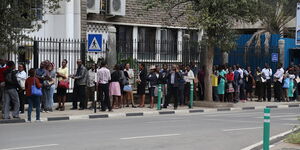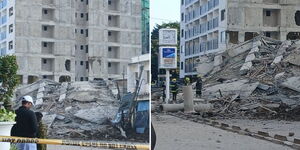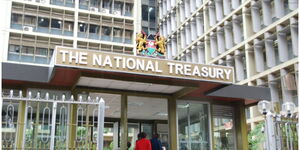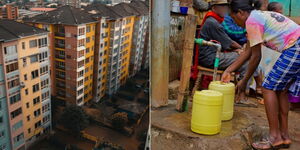Ever wondered why most gas cylinders are usually covered with nets during distribution?
A recent photo of gas cylinders packed with a black net covering them elicited debate among netizens who gave various reasons as to the purpose of the nets.
One Mwikali Steve opined that the nets were meant to reduce friction during transportation.
Additionally, the gas cylinder plastic protection net helps to keep the aesthetic of the gas cylinders.
It protects the paint layer and the gas cylinder outlook from damage.
The protection nets which are produced from extruded plastic are also used for the protection of diving, oxygen, home cylinders, and LPG auto tanks.
They are produced in red, black, white, blue, and yellow colours to match the colour of the tube.
Equally, the protection net, made of strong threads and plastic material, has a construction that is resistant to all weather and environmental conditions.
Flat-shaped nets guarantee that the tubes piled on top of one other do not damage each other and also protect them from collisions from the bottom and top.
The weight of this net per yard can range from 25g to 200g. It allows the tubes to breathe thanks to its pores of 10 x 20 mm and 15 x 25 mm.
Handling, storage and utilization of all compressed gas cylinders must be in accordance with set guidelines by the Energy, Petroleum and Regulatory Authority (EPRA) on the safe handling of compressed gases in containers
According to EPRA, gas cylinders should be properly secured at all times to prevent tipping, falling or rolling.
They should be stored in a cool, dry, well-ventilated, fire-resistant area that meets all regulations.
When a gas cylinder is empty or not being used, the valve should be closed, the regulator removed and the valve protector cap secured in place.
Also, gas cylinders should be transported using hand trucks designed for that purpose and the cylinders be secured so that they do not tip, fall or roll.
Importantly, during a leakage, if the cylinder contains a flammable gas, remove it to an isolated area, away from possible ignition sources.
Allow it to remain isolated until the gas has discharged, making certain that appropriate warnings have been posted.
Users are advised never to use a flame to detect a gas leak instead they should use soapy water.












